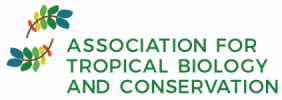Hawai’i is a geographically isolated archipelago comprising a diverse range of biophysical environments. Its situation has resulted in more than 18,000 native species, many of which are unique to Hawai’i, including 81% of birds, 90% of the terrestrial plants, 99% of terrestrial molluscs and insects, and approximately 40% of marine molluscs.
Accidental and intentional introductions of alien species have, however, transformed ecosystems and landscapes. Although most introduced species have little adverse impact, some cause major problems through their spread and ability to transform native ecosystems, frequently causing extensive losses of native biodiversity in the process. These are called invasive alien species. In Hawai’i invasive alien species have caused, and continue to cause harm to the survival of native species, as well as to ecosystem services such as pollination and watershed productivity, production of food and forest commodities, water quality, and public health, all of which impact the local economies and quality of life.
Hawaiʻi imports most of its food, fuel, and construction and consumer goods via marine and air transportation. It is by these means that most invasive alien species are imported into the state from the US mainland and other countries. The vast majority of incoming goods are not inspected for pests; ballast water compliance is unverified; and, there are no rules in place to mitigate the risk of biofouling organisms on vessels’ hulls. Thus, introductions of invasive alien species have been facilitated by gaps in biosecurity programs for the prevention, detection, and isolation of potentially problematic alien species.
Two examples of major invasive species and impacts are the Little Fire Ant and Miconia:
Little Fire Ants (Wasmannia auropunctata; also known as the electric ant) are stinging ants that impact public health and quality of life. They have also affected invertebrate and wild animal populations, and promoted scale insects which in turn impact agricultural crops and plants. Since 1999 Little Fire Ants have spread to over 4,000 locations on the island of Hawaiʻi and have even been found in isolated locations on Kauaʻi, Maui, and Oʻahu Islands. A 2013 study found that the economic impact of Little Fire Ants on Hawaiʻi Island is $194 million annually. An immediate expenditure of $8 million in the next 2–3 years plus follow-up prevention, monitoring, and mitigation treatments will yield $1.210 billion in reduced control costs and $129 million in lowered economic damages, over 10 years. It will not, however, result in eradication.
Miconia calvescens is a plant which can form monotypic stands by outcompeting native plants for light, space, and water resources. Its large leaves collect and then deposit large water drops that cause soil erosion, and its shallow root system may further destabilize slopes and promote erosion through enhanced run-off. Economic damage by Miconia in Hawai‘i is estimated at $672 million annually, mainly in lost groundwater recharge and decreased valuation of habitat invaded by Miconia.
Despite the many invasive species already present in Hawai‘i, many more potentially invasive alien species are not yet present. Greatly enhanced biosecurity measures could prevent new devastating invasive pests from arriving and becoming established. For instance, the annual economic impact to Hawai‘i if Red Fire Ants (Solenopsis invicta) become established is estimated at $211 million, while that of Brown Tree Snakes (Boiga irregularis) is estimated at $2.14 billion.
The Hawaiʻi Department of Agriculture, the agency charged with preventing the introduction and establishment of plants, animals and diseases that are detrimental to the state’s agriculture industry and the environment, receives a mere 0.5% of the state budget. The Hawaiʻi Department of Land and Natural Resources, the agency that is charged with protecting aquatic and terrestrial resources fares little better at 1% of the budget. A third agency, the Hawaiʻi Department of Health, also plays a role in protecting Hawaiʻi by its vector control and disease monitoring activities. For example, the mosquito vectors for West Nile virus (WNV) which is having severe impacts on bird populations on the mainland are widespread in Hawai’i and there is no disease-free winter. The DoH’s mosquito monitoring program has, however, experienced budget cuts that have reduced a program supporting hundreds of monitoring traps at all ports and key detection sites on Oʻahu to just four at Honolulu International Airport.
In Summary:
- Hawaiʻi is one of the world’s richest biodiversity hotspots, with the highest rates of endemism in the world;
- Hawaiʻi’s plants and floral communities are the most threatened in the United States, but receive a tiny fraction of all US endangered species funds;
- Hawaiʻi’s remaining biodiversity is increasingly threatened by invasive alien species;
- Despite multiple federal and state agencies mandated to address invasive alien species, there are still major gaps in funding, resources, and priorities;
- Many elements of an effective Biosecurity Plan are already in place, but leaders and funding need to be identified to take this forward.
We, the Association for Tropical Biology and Conservation representing >850 scientists and conservationists from 64 nations including the United States of America, urge the State of Hawaii and U.S. government to:
- Secure significant, long-term final staffing commitments by the public, business leaders, and policymakers for addressing key policy, resource, and infrastructure needs to limit the establishment and mitigate the impacts of invasive alien species in Hawaiʻi.
- Establish effective and fully-functioning quarantine inspection facilities at all major airports on all islands and at Honolulu Harbor.
- Commit to the establishment, funding, and implementation of a long-term plan to counter invasive alien species.
- Take full and immediate advantage of the state’s 2050 Sustainability Plan, the Regional Biosecurity Plan, and the Aloha + Challenge targets on reversing the trend of natural resource loss.
- Fully engage the institutional expertise represented in state and federal agencies, universities, NGOs, and business and policy stakeholders to work together to craft, support, and implement a Hawaiʻi Biosecurity Plan.
(Link to PDF: ATBC-resolution25-Hawaiian-Invasives)



